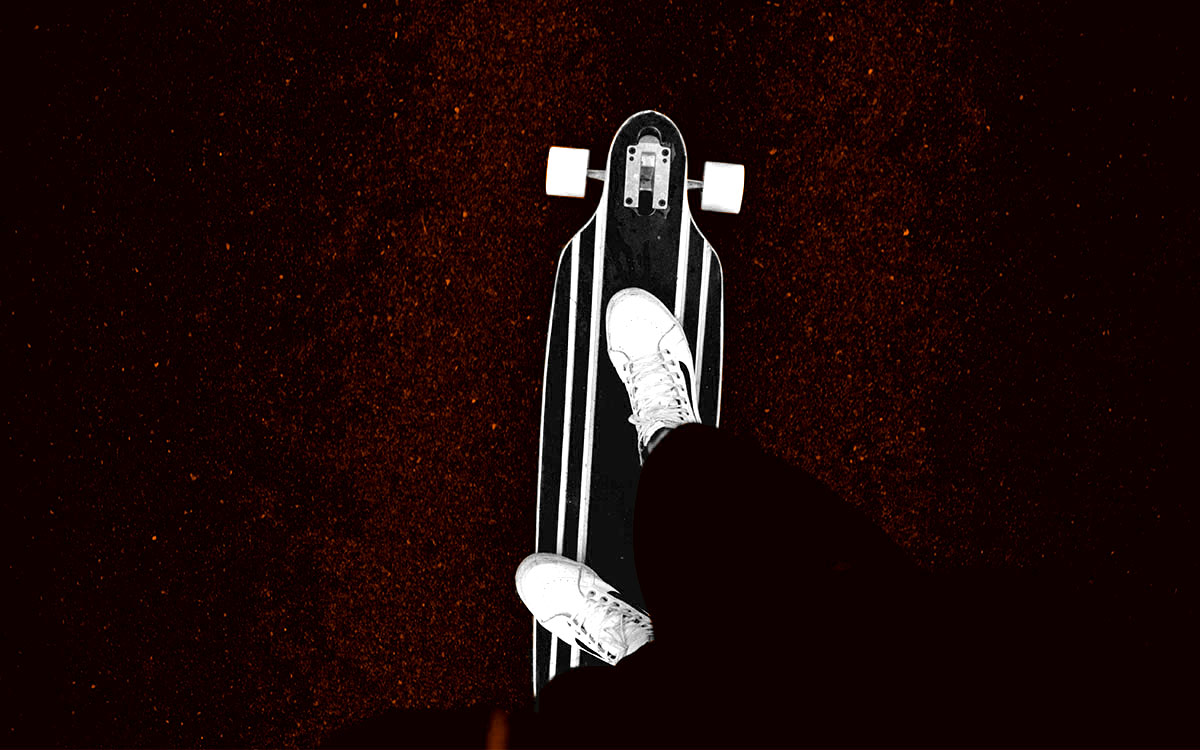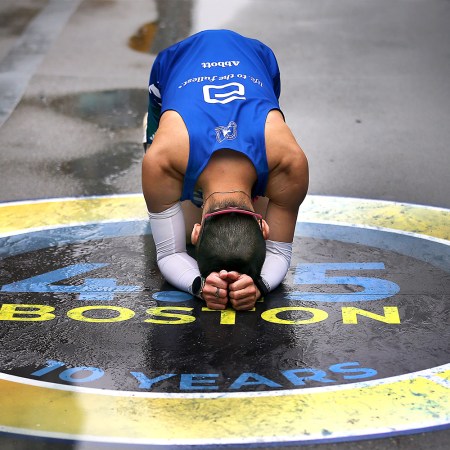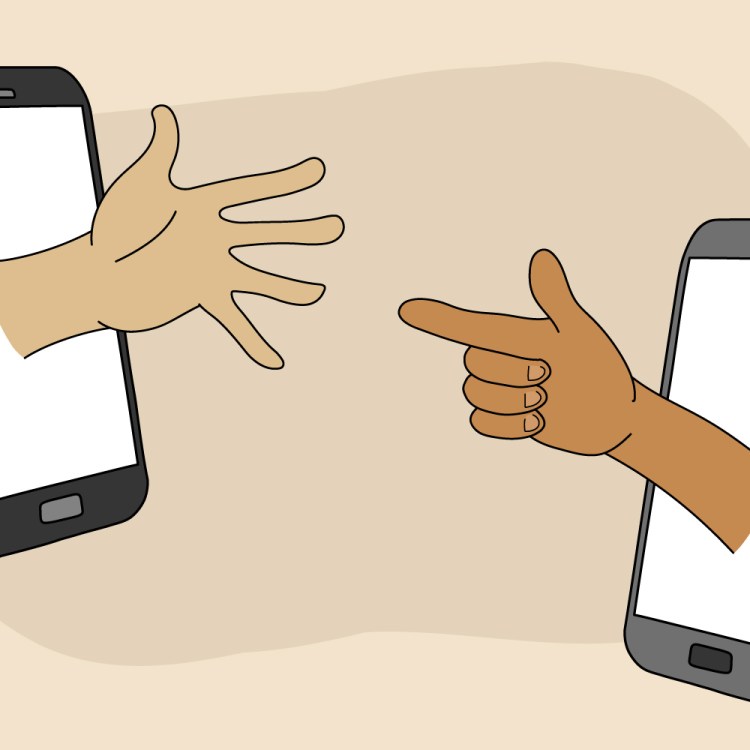Welcome to The Workout From Home Diaries. Throughout our national self-isolation period, we’ll be sharing single-exercise deep dives, offbeat belly-busters and general get-off-the-couch inspiration that doesn’t require a visit to your (now-shuttered) local gym.
At the risk of a best-man-speech cliché, Merriam-Webster defines “cardio” as any activity that increases your heart rate. It’s pretty simple: When we employ large muscle groups in a consistent rhythm, engaging our hearts, lungs and circulatory systems, we’re performing cardiovascular exercise. From there, cardio activities branch off into high-impact and low-impact; that distinction, in turn, boils down to whether both feet leave solid ground at any point during the exercise. Running, jump roping and kickboxing are high-impact. Hiking, swimming and riding around on a skateboard or longboard are examples of low-impact.
Over the last two years, I’ve come to rely on longboarding as a quiet, steady complement to my general fitness routine, a weekly regimen that mixes strength training days, running days and yoga/mat Pilates. If that sentence were read to me back in 2017, I would’ve been mightily confused: 1) I’m going to learn how to longboard? And more importantly, 2) Longboarding is a workout? But for much of 2018, I couldn’t imagine my life without my recently discovered hobby. And by the end of 2019, reflecting on its wellness benefits for both body and soul, I actually began to wonder if longboarding deserved a stronger term than “hobby.” I wasn’t exactly drenched in sweat when I returned from an hour or so out on the board, but that didn’t mean the hour didn’t count as … something?
The most generous thing I’ve seen a Baby Boomer say about boarding belongs to Jerry Seinfeld, who, riffing with Chris Rock on an early episode of Comedians in Cars Getting Coffee, said: “It’s one of the great activities. To learn to do a skateboard trick … how many times do you fall and hurt yourself? Then you learn it, and you’ve got a life lesson. Whenever I see those skateboard kids, I think, ‘Those kids are gonna be alright.’” I never had the tolerance Seinfeld speaks so glowingly of (for patience or pain) to properly learn skateboarding tricks. I can remember appreciating the skating world — as a young kid, I’d ogle the local rats slurping AriZona iced tea cans and practicing manuals at the skate park; as a journalist, I’ve watched pros pull backside flips in an Oahu lot across the street from the Banzai Pipeline — but spectation was always my end game, never participation.
Longboarding, though, that appealed to me. It seemed a more personal pursuit, with a lower barrier of entry on both the skill and intimidation fronts, a way to be outside, an offbeat option for getting around, a form of expression that was effortlessly bespoke, even mildly rebellious. It reminded me of the guitar world, which I’d long admired from afar.
I bought my first board in the spring of 2018, and brought it to the same place where I learned how to ride a bike in the late ’90s, a cemetery with an outer loop just under a mile, and an additional many miles of cement capillaries in between. Once the days started getting longer, I took my board out every evening after work. There was little learning curve and no weight of expectation. Longboards are hefty things (they’re sometimes called “boats”) and generally built for cruising, with 40″-plus decks and springy trucks that encourage easy turns. Skateboards, by contrast, are smaller, hardy, stiff, faster and built to be tested and messed up on. After a shaky first couple afternoons with my longboard, now difficult for me to even remember — sort of like trying to recall the first few awkward conversations with someone who’s now an old friend — I found my speed. I memorized hills I liked going down. I learned how to approach an impediment in the road, like a stick or pebble, then dance away with a twist of my hips at the last second. I bought three more boards. I tried them out all over Brooklyn.
I learned to rely on longboarding as a mindless passage of time, a chance to move throughout the world without needing to do so, or needing anywhere to be, kind of like an anti-commute. I’d put in earbuds, and tourists who assumed I was chuckling at them as I rode by in Central Park should know I was actually reacting to Conan O’Brien and Bill Hader falling into It’s a Wonderful Life impressions just six minutes into the “Conan Needs a Friend” podcast. I’d listen to music. I’d think about writing projects I wanted to finish, or start, and more often than not I’d think about nothing but of-the-moment sensations, like how I felt turning after coming out of a steep decline, or how my fingers were starting to get too cold, or how this pair of Vans seemed to grip the board a little easier than the navy ones back at the house.
When I began to read more about alternative meditation techniques, and the concept of everyday mindfulness, I thought almost immediately about my time-slowing (Or speeding, maybe? I can never really tell) sessions on my longboard. I feared, for a beat, that knowing my longboard was good for my anxiety, that it was a ready-made tonic for my mental health, might somehow undo it, might untie all that I’d unconsciously built. Thankfully, there wasn’t any truth in that thought. These days, as I’m back by the cemetery where it all started, I’ve relied on boarding once a day (at least — the weekends get a daily double) for repose, if not exactly peace of mind. And I’ve taken a special interest in the activity’s bonus appeal as added exercise.
A consistent cardio routine means a longer life, and importantly, more high-quality years as that life plays out. Cardio lowers your blood pressure and cholesterol. It reduces risk of osteoporosis. It strengthens the lungs. It helps you fall asleep. It facilitates blood flow, which improves mood and boosts productivity (whatever that word may mean for you). The American Heart Association recommends at least 30 minutes of moderate aerobic activity at least five days a week. Many hear that and choose to count steps. There’s nothing wrong with that; I love counting steps. This publication would be the first to recommend a daily walk. But it’s possible to improve your heart health, and a dozen other organs and processes throughout the body, while injecting a little unexpected zest into your cardio. Using a metabolic equivalent calculator, which measures the energy cost of a specific physical activity for a specific period of time, we can determine how many calories are burnt when longboarding around with moderate effort. I’m 180 lbs. When I longboard for an hour, I burn somewhere in the neighborhood of 430 calories.
But beyond steps and calories, longboarding isn’t shy about dredging out capabilities that naturally wane as we age. Flexibility, balance and stamina are all probed and improved on when you roll around on a piece of wood attached to wheels. It’s little wonder the sport was born in Hawaii in the 1950s; whenever the waves were too small, surfers brought their pastime to the islands’ roads and sidewalks. Did they think of longboarding as a workout? Probably not. Many surf bums, even today, don’t consider surfing a workout. But that’s what makes mindless, low-impact cardio activities such a lifehack. Longboarding is a way to utterly lose oneself — sometimes I’ll take a phone call from my board, other times my brain will literally ship off to another plane — while adding crucial minutes not spent slouched on the couch. It’s free cardio, essentially, something entirely different, and while you’re probably too old to go learn an ollie at the skate park, a patch of pavement and a longboard is fair game for any who value fresh air, a clear mind and a healthy heart.
Whether you’re looking to get into shape, or just get out of a funk, The Charge has got you covered. Sign up for our new wellness newsletter today.


















